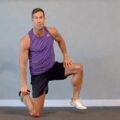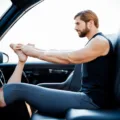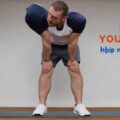Stretching is an essential part of any fitness routine, but not all muscles are created equal when it comes to flexibility. Some muscles are notoriously difficult to stretch, and many people struggle to find effective ways to target them. In this article, we will explore the muscles that are hardest to stretch and provide tips on how to effectively target them.
1. Hamstrings
The hamstrings, located at the back of your thigh, are often tight and difficult to stretch. They are crucial for activities such as running, jumping, and bending your knees.
How to Stretch Your Hamstrings
- Seated Forward Bend: Sit on the floor with your legs extended straight. Reach forward towards your toes, keeping your back straight. Hold for 20-30 seconds.
- Standing Hamstring Stretch: Stand with one foot on a low bench or chair. Keep your leg straight and bend at the hips towards your raised foot. Hold for 20-30 seconds.
2. Hip Flexors
The hip flexors are a group of muscles located at the front of your hip. They are often tight in people who sit for long periods.
How to Stretch Your Hip Flexors
- Kneeling Hip Flexor Stretch: Kneel on one knee with the other foot in front. Push your hips forward and hold for 20-30 seconds.
- Pigeon Pose: From a plank position, bring one knee towards your wrist and extend the opposite leg straight back. Lower your hips and hold for 20-30 seconds.
3. Calves
The calf muscles are located at the back of your lower leg and are often tight, especially in runners or those who wear high heels.
How to Stretch Your Calves
- Standing Calf Stretch: Stand facing a wall with one foot forward and the other back. Keep both heels on the ground and lean forward. Hold for 20-30 seconds.
- Downward Dog: From a plank position, lift your hips upward, forming an inverted V. Press your heels towards the ground and hold for 20-30 seconds.
4. Shoulders
Shoulder muscles can become tight due to poor posture or repetitive movements.
How to Stretch Your Shoulders
- Cross-Body Shoulder Stretch: Bring one arm across your body and use the opposite hand to push it towards your chest. Hold for 20-30 seconds.
- Thread the Needle: From a tabletop position, slide one arm under the opposite arm and lower your shoulder to the ground. Hold for 20-30 seconds.
5. Lower Back
The lower back is often tight due to prolonged sitting or improper lifting techniques.
How to Stretch Your Lower Back
- Child’s Pose: From a kneeling position, sit back on your heels and extend your arms forward, lowering your chest towards the ground. Hold for 20-30 seconds.
- Knee-to-Chest Stretch: Lie on your back and bring one knee towards your chest, holding it with your hands. Hold for 20-30 seconds and switch sides.
FAQ
1. Why are some muscles harder to stretch than others?
Some muscles are harder to stretch due to their anatomical structure, frequent use, or tightness from prolonged positions such as sitting.
2. How often should I stretch these muscles?
Aim to stretch these muscles at least 2-3 times a week, or more frequently if you experience significant tightness.
3. Can stretching help prevent injuries?
Yes, regular stretching can improve flexibility, reduce muscle tension, and decrease the risk of injuries.
4. Is it normal to feel pain while stretching?
You should feel a gentle pull, but not pain. If you experience sharp pain, stop immediately and consult a healthcare professional.
5. Are there any tools that can help with stretching?
Yes, tools such as foam rollers, resistance bands, and stretching straps can assist in deepening your stretches and targeting hard-to-reach muscles.









